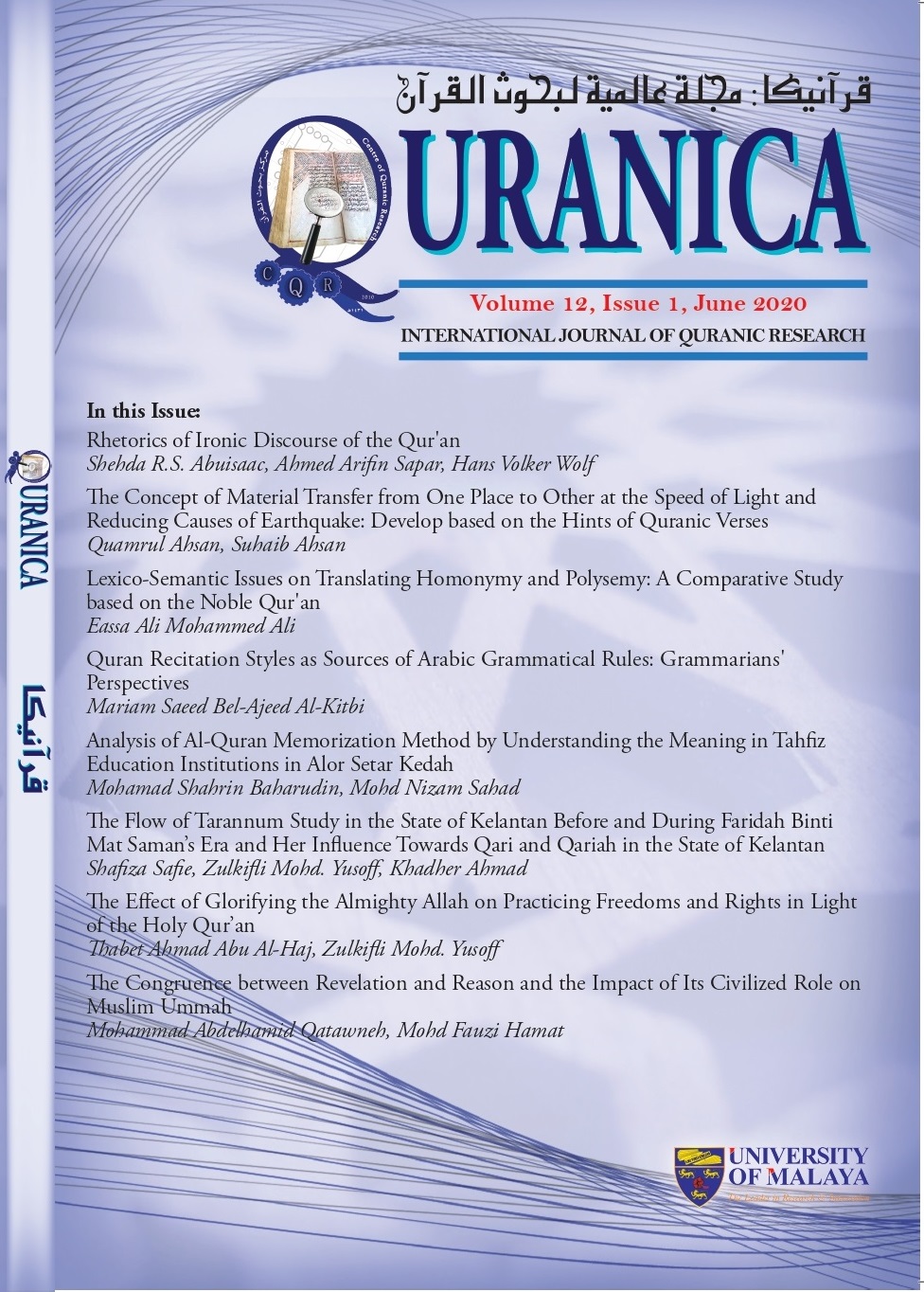Lexico-Semantic Issues on Translating Homonymy and Polysemy: A Comparative Study based on the Noble Qur'an
Main Article Content
Abstract
This study focuses on the rendition of Qur’ānic homonyms and polysems in three famous English translations. The research aims at scrutinizing the three translations and comparing them to the source text for determining which of the selected translations is more faithful and eventually to answer this question “To what extent does each of the translations succeed in avoiding meaning loss and showing awareness in translating Qur’ānic homonyms and polysems?” The criticism relies on the three renowned Arabic exegeses; Ibn Kathir, Al-Tabari and Al-Qurtubi. Therefore, to answer the aforementioned question, fourteen examples have been selected for the study. The study started analyzing the three translations by using Qualitative Comparative Analysis Method. The findings obtained from the data analysis indicate that: First, homonymy and polysemy are one of the core problems in translation as they have multiple meanings that differ from one context into another. Second, the translators show awareness of homonymy and polysemy so that they maintain the source message in most of the cases. However, they, especially Yusuf Ali, miss the homonymic and polysemic senses, in some cases, due to the literal translation shown through their consideration of only the primary meanings. Third, the three translations vary in the accuracy degree due to the choice of English words. Fourth, mistranslating the selected items affects the total meaning of the Qur’ānic verse in some cases. Briefly, Hilali & Khan’s and Saheeh Internayional’s come first in faithfulness and then Yusuf Ali’s.
Downloads
Article Details
Disclaimer
QURANICA makes every effort to ensure the accuracy of all its contents. However, opinions, discussions, views and recommendations are expressed in this journal do not necessarily reflect the official policy of QURANICA or views of its editors or publishers. Therefore, QURANICA and its publishers will not be liable for any controversy may be arisen. The journal reserves the right, at its sole discretion, to change its terms and conditions of publications.
Copyright
It is a condition of publication that manuscript submitted to the journal have not been published, accepted for publication, nor simultaneously submitted for publication elsewhere. By submitting a manuscript, the author(s) agrees that copyright for the article is transferred to the publisher, if and when the manuscript is accepted for publication.
